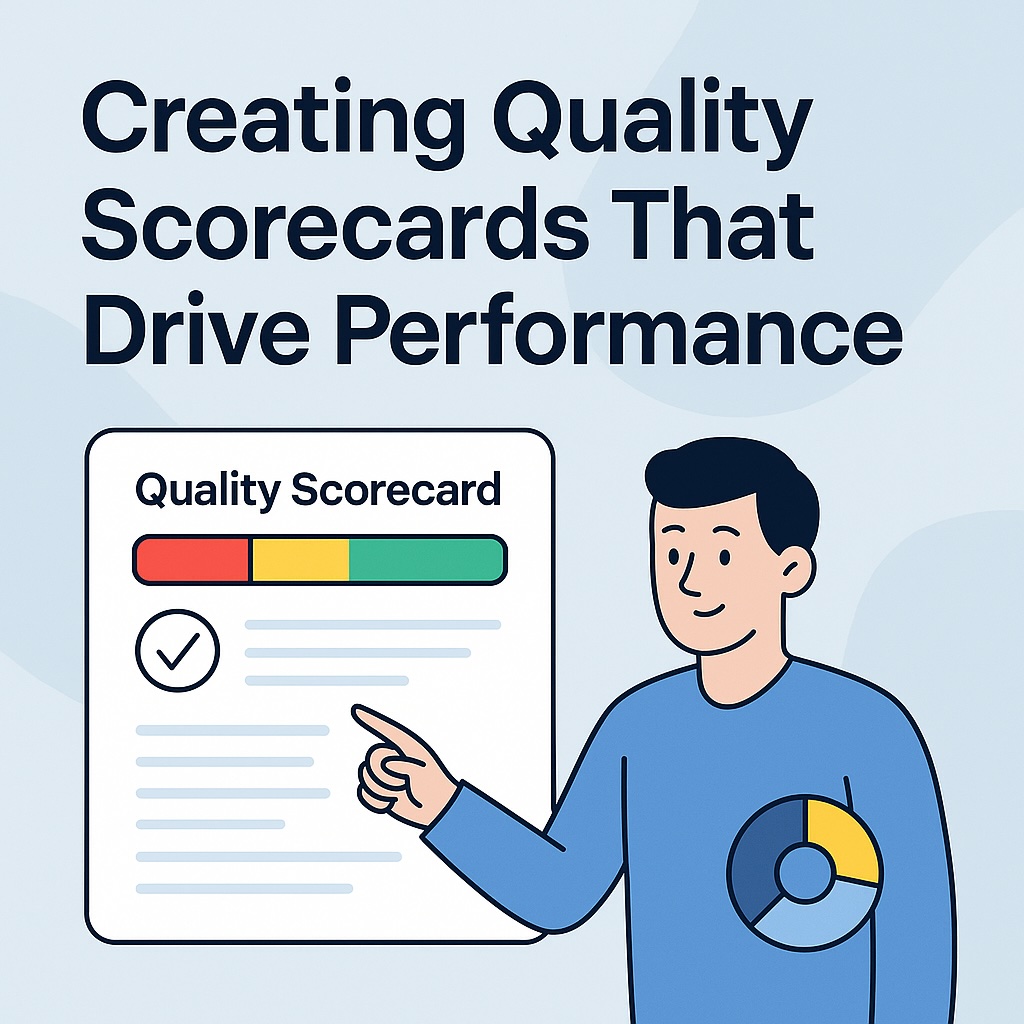
How to Build a Quality Monitoring Framework from Scratch — A 90-Day Step-by-Step Guide
Why Quality Monitoring Matters
Customer satisfaction is shaped by every single call, email, or chat.
Without structured monitoring, managers often rely on anecdotes or random sampling — usually less than 2 % of interactions. That leaves blind spots where problems grow unnoticed.
A good QM framework helps you uncover systemic issues, coach agents effectively, and prove the ROI of your service initiatives.
The 90-Day Roadmap
You can think of the journey in three phases:
- Days 1–30: Lay the foundation – align stakeholders, set goals, define criteria and scoring rules.
- Days 31–60: Build and test – choose technology, create workflows, run a pilot scoring sprint.
- Days 61–90: Roll out and scale – train teams, launch dashboards, track first results.
Phase 1: Lay the Foundation (Days 1–30)
Start by gathering the right stakeholders: an executive sponsor for budget and buy-in, CX or support leaders who know daily operations, a QA or training lead to make criteria actionable, and someone from IT or data to manage integrations. A kickoff meeting early in week 1 should align everyone on why you’re building QM and what success will look like in three, six, and twelve months.
Next, set clear goals. Examples include reducing complaint resolution time by 15 %, improving CSAT on top pain-points by half a point within six months, or shortening new-agent onboarding time by 20 % by identifying recurring skill gaps.
Then draft your first evaluation criteria. Focus on observable behaviours that truly drive customer experience: greeting and tone, problem identification and reformulation, compliance with policies such as GDPR or scripts, accuracy of resolution, and empathy. To keep things consistent, limit yourself to five to seven criteria at the start.
Finally, design a scoring model. Decide how to weight each criterion — for example, resolution 40 %, empathy 20 %, compliance 20 %, communication 20 %. Use a one-to-five or one-to-ten scale and define behaviour-based descriptors so evaluators score consistently. Collect everything in a short “Scoring Guide”.
Phase 2: Build and Test (Days 31–60)
Select the right technology for your needs. Look for a platform that captures all interactions across channels, allows custom scoring forms and ideally AI-powered auto-scoring, and integrates smoothly with your CRM or helpdesk such as Zendesk or Salesforce.
It’s wise to pilot the tool on a single channel first — for example inbound calls — to prove value quickly.
Create simple workflows: who reviews which cases and how often, how feedback loops are delivered to agents, and when calibration sessions happen to keep evaluators aligned.
Before full rollout, run a pilot sprint on 200–300 interactions. Ask at least two evaluators to score the same cases to check consistency and gather frontline feedback to adjust the criteria or weights as needed.
Phase 3: Roll Out and Scale (Days 61–90)
Train every stakeholder group: agents, team leads, evaluators. Explain that QM is designed to help coaching and growth rather than policing. Share job aids such as cheat-sheets for the scoring guide.
Launch your dashboards. At a minimum you should be able to track the average quality score per team and per agent, see how each criterion performs (for example empathy versus compliance), and correlate quality scores with CSAT, NPS or first-contact resolution.
Set up a continuous-improvement loop: hold monthly review meetings with stakeholders, align coaching plans on the top two or three weaknesses you find, and celebrate improvements — for example agents whose empathy score improved the most in a month.
Common Pitfalls to Avoid
Do not start with too many criteria — it causes evaluator fatigue and inconsistent scoring.
Do not skip calibration sessions — without them, scores lose credibility fast.
Do not ignore feedback from frontline teams — adoption will stall.
Finally, always link QM metrics back to business outcomes; otherwise executives will lose interest.




